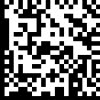The March Towards A Universal Reader
 A new use of an existing technology emerged 2 years ago in Japan that currently holds the potential to revolutionize and accelerate Mobile Internet adoption in Europe and North America via the use of 2-dimensional smartcodes.
A new use of an existing technology emerged 2 years ago in Japan that currently holds the potential to revolutionize and accelerate Mobile Internet adoption in Europe and North America via the use of 2-dimensional smartcodes.These smartcodes, when scanned with a camera-enabled mobile device, put the power in the hands of the consumer and ultimately unlocked the true potential of the Mobile Internet by providing easy navigation and one-click-to-content. Over the last couple years, 2-dimensional smartcodes have become common-place in Japan as well as in other Asian countries such as South Korea, the Philippians, and they are now slowly starting to emerge in China.
With this rapidly evolving mobile landscape progressing at break-neck speed, new companies have emerged with innovative mobile smartcode reading platforms aimed at creating a interconnected world where every physical object can be linked to the Mobile Internet.
While companies such as Kaywa, Gavitec, NeoMedia Technologies, and Semacode have opted to utilize the three open-code standards: Datamatrix, QR, and Aztec, other companies such as Nextcode, Shotcode, and Beetagg have chosen to utilize their own proprietary 2-dimensional smartcodes.
As a result, adoption has been slow since no standards body currently exists. According to Tim Kindberg, a researcher at Hewlett-Packard, "The more competitive mobile communications markets that exist in other countries make it harder for agreement on technology to emerge in these places. It’s been on the verge of happening for some time now – the technology is there, but the problem is the fragmentation in the market.”
 With so many 2-dimensional smartcodes and mobile code reading platforms congesting the market, Mr. Kindberg teamed up with Publicis Groupe and Zenith Optimedia, along with mobile code reading innovators and industry leaders
With so many 2-dimensional smartcodes and mobile code reading platforms congesting the market, Mr. Kindberg teamed up with Publicis Groupe and Zenith Optimedia, along with mobile code reading innovators and industry leaders  Gavitec and NeoMedia Technologies to form the Mobile Codes Consortium.
Gavitec and NeoMedia Technologies to form the Mobile Codes Consortium. According to the Consortium, "Our goal is to create a consortium for a new Mobile Marketing ecosystem based around camera phones and 2D barcodes. A market-driven, open-standards
 approach will allow 2D barcodes to act as a catalyst in Mobile Internet adoption, mirroring the growth of web adoption over the last ten years."
approach will allow 2D barcodes to act as a catalyst in Mobile Internet adoption, mirroring the growth of web adoption over the last ten years."Their mission statement and standards discussion document can be viewed here.
Progress has been held back by the lack of common technology that would let any phone read any 2-dimensional smartcode, and then complete the necessary routing needed to link back to the relevant content on the web, according to backers of the London initiative.
Mobile carriers and handset manufacturers are calling for a universal reader with the capability to read and decipher Datamatrix, QR, and Aztec codes. And as a result, at last Tuesdays MC2 meeting in London, there were 20+ highly interested parties who attended -- consisting of carriers, handset manufacturers, and technology innovators. With such predominate backing from these deeply involved parties, MC2 will certainly set the global standards for mobile smartcode dissemination.
With the stage now set, the march towards a universal reader has begun. Gavitec and NeoMedia Technologies were specially invited to join the Consortium since Gavitec's mobile platform Lavasphere is highly regarding as the best code reading platform ever developed. And with NeoMedia's mobile qode® technology, along with an extensive portfolio of international patents covering the process of dynamically linking smartcodes to content on the Mobile Internet, the development of a universal 2-dimensional smartcode reader is not far behind.
Labels: Gavitec, Hewlett Packard, MC2, Mobile Codes Consortium, Mobile Marketing, NeoMedia, Publicis Groupe, qode, Universal Reader







0 Comments:
Post a Comment
Subscribe to Post Comments [Atom]
<< Home